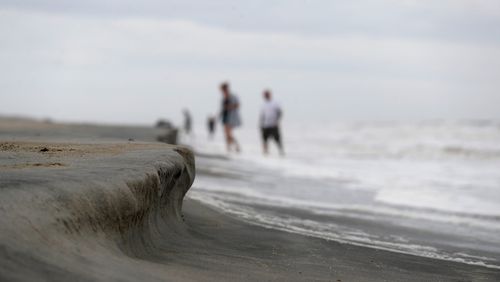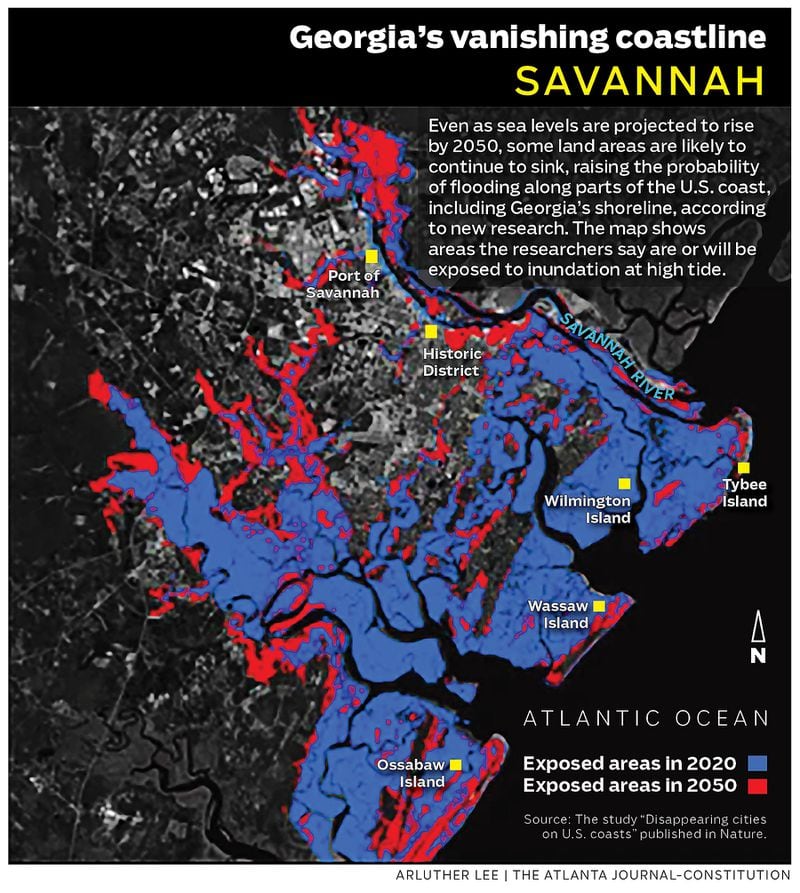A new study suggests Savannah and other U.S. coastal cities may be more vulnerable to rising sea levels because the land itself is sinking more than realized.
As a result, some communities may be underestimating flooding risks, the authors warn in the journal Nature.
Charts from the research factored in changing land levels. They show that, of 32 U.S. coastal cities studied, the Savannah area had the second-largest area exposed to high-tide flooding in 2020 — about 135 square miles, behind only New Orleans. And they project that by 2050, the Savannah area would have more area potentially impacted than all but New Orleans and Miami.
Thousands of people in the Georgia coastal city would be at risk of flooding at high tide, a study chart indicates. Maps provided with the research show vast areas already at risk of inundation and others, including near downtown Savannah and on Tybee Island, at increased risk by 2050.
The peer-reviewed study, published last week, attempts to provide a more accurate picture of the impact of the combination of rising sea levels along with coastal subsidence — an already known process of sinking land areas.
The land settling around the world can have natural causes, such as earthquakes, erosion or gradual changes from long-ago changes in glaciers, or stem from human activities, such as from pumping out groundwater, mining or removing fossil fuels.
Other projections about the potential effects of rising sea levels on coastal cities have attempted to factor in the impact of sinking land areas. But in the latest study, researchers created different inundation hazard models using more specific, detailed data on land movement and other factors within each community.
The study was produced by researchers from Virginia Tech, a United Nations University institute in Canada, IISER Mohali in India, Brown University and the University of East Anglia in the United Kingdom.
Credit: ArLuther Lee
Credit: ArLuther Lee








